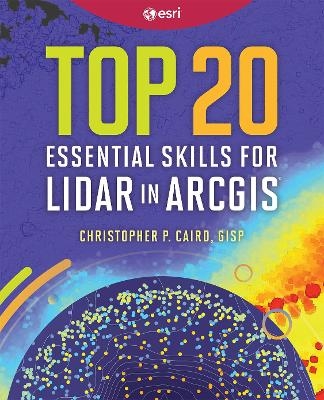
Top 20 Essential Skills for Lidar
ESRI Press (Verlag)
978-1-58948-786-4 (ISBN)
- Noch nicht erschienen (ca. August 2025)
- Versandkostenfrei innerhalb Deutschlands
- Auch auf Rechnung
- Verfügbarkeit in der Filiale vor Ort prüfen
- Artikel merken
Through 20 step-by-step tutorials, gain the knowledge to understand, manage, analyze, and create immersive 3D products using lidar data.
Throughout Top 20 Essential Skills for Lidar, you'll discover a range of essential lidar skills and best practices for preparing and storing data, sharing methods, and rendering techniques. Each chapter presents a bite-sized, standalone tutorial with easy-to-follow steps, accompanied by tips and considerations that enhance your understanding of the underlying concepts.
Using 20 step-by-step tutorials you will explore how to:
Assess lidar data properties and correct common errors
Visualize lidar data and convert between data types
Create final data products and maps
Classify lidar data
Assess point spacing and density
Use constraints
Apply manual and automated classification
Calculate volume and other measurements
Create 3D surfaces such as digital terrain models and digital surface models
Extract features such as trees and buildings
Create viewsheds
Perform shadow analysis
Apply raster functions
Leverage deep learning
Whether you're new to lidar or looking to expand your skills, Top 20 Essential Skills for Lidar provides a practical and accessible resource for exploring lidar data sources, working in 3D, and creating data-driven outputs.
Christopher P. Caird is a Esri Advantage Program Advisor and Technical Consultant in Esri’s Professional Services division. He works on Enterprise GIS, imagery, oriented imagery, and provides lidar expertise for the transportation industry from the Denver, Colorado Regional Office.
Introduction
to
Lidar
Understanding
Lidar
Visualizing Lidar data in ArcGIS Pro
Managing Lidar in
ArcGIS Pro
Assessing Lidar quality
Data optimization
Classification processes of Lidar using ArcGIS Pro
Using pre-trained
models for point classification
Training a model for
point classification
Creating surfaces
Creating contours
Introduction to ArcGIS Pro analysis tools
Extracting objects from Lidar
Extract objects using deep learning
Other Lidar analysis
workflows
Share Lidar point
cloud data to a portal
Using Lidar data in web scenes
Share surfaces
Using indoor Lidar
Data resources and use cases
| Erscheint lt. Verlag | 21.8.2025 |
|---|---|
| Zusatzinfo | Illustrations |
| Verlagsort | Redlands |
| Sprache | englisch |
| Maße | 190 x 234 mm |
| Themenwelt | Schulbuch / Wörterbuch ► Unterrichtsvorbereitung ► Unterrichts-Handreichungen |
| Mathematik / Informatik ► Informatik ► Datenbanken | |
| Informatik ► Software Entwicklung ► User Interfaces (HCI) | |
| Naturwissenschaften ► Geowissenschaften ► Geografie / Kartografie | |
| Sozialwissenschaften ► Pädagogik | |
| ISBN-10 | 1-58948-786-9 / 1589487869 |
| ISBN-13 | 978-1-58948-786-4 / 9781589487864 |
| Zustand | Neuware |
| Informationen gemäß Produktsicherheitsverordnung (GPSR) | |
| Haben Sie eine Frage zum Produkt? |
aus dem Bereich


